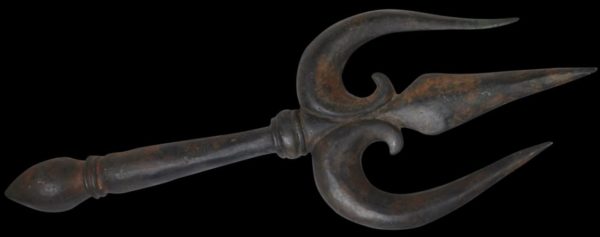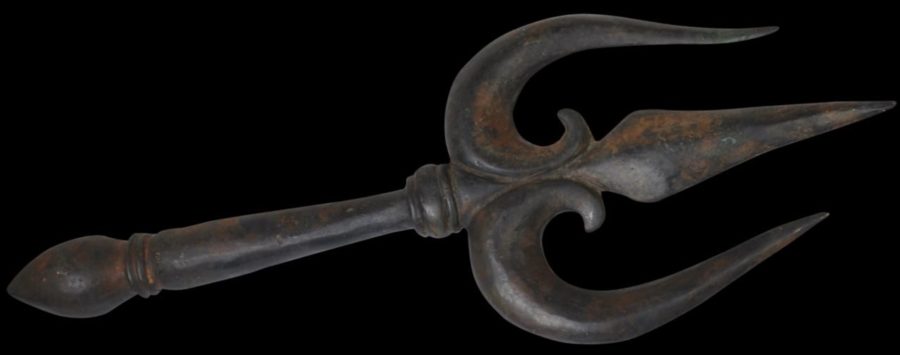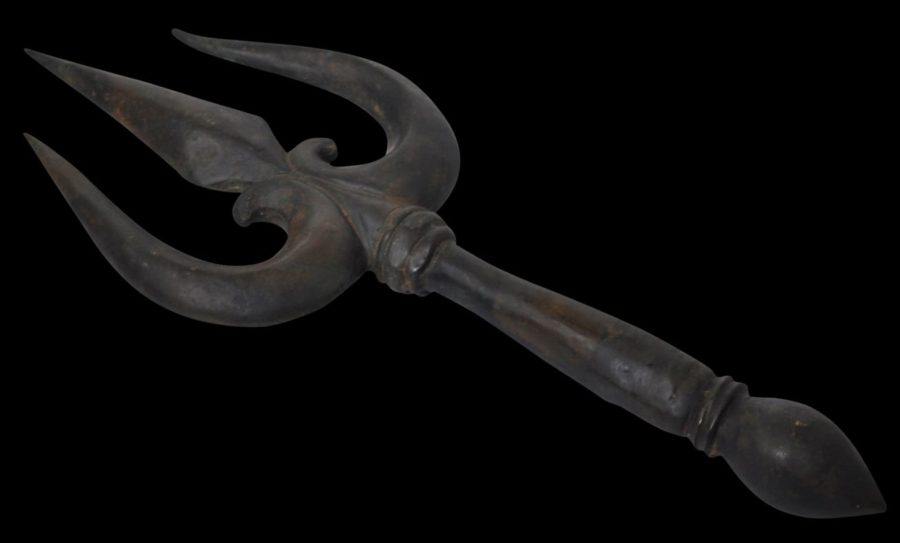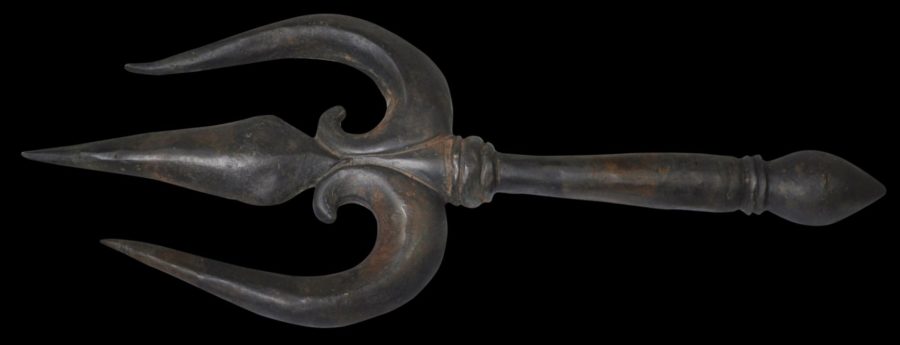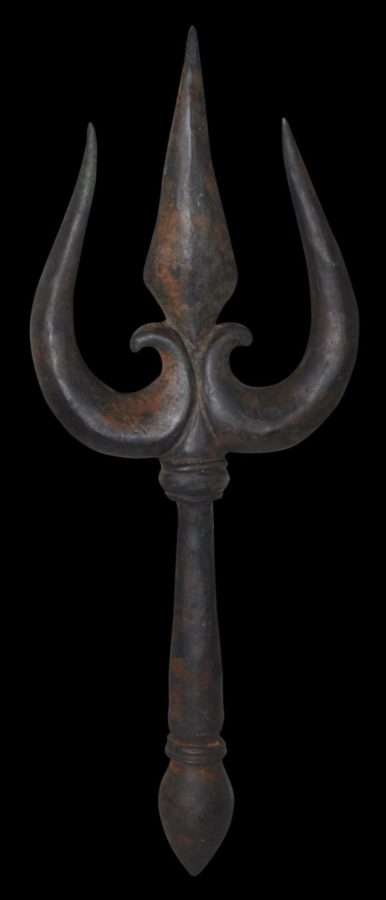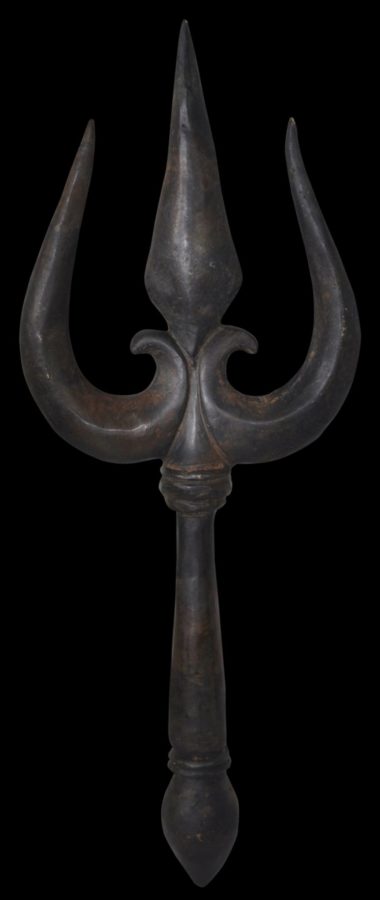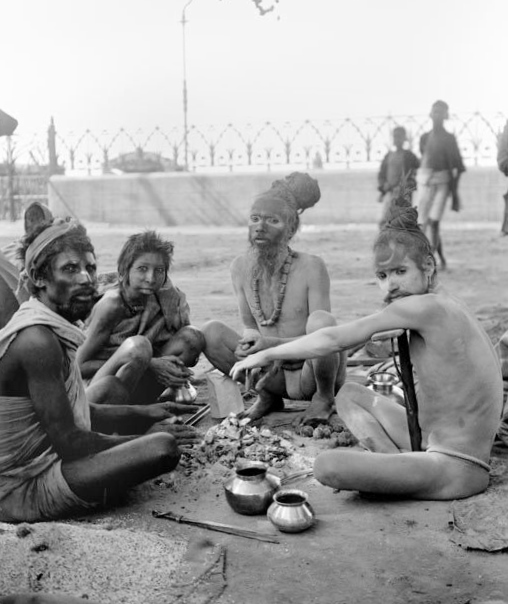This trident or trishula, cast in bronze, would have been used in India, by a Hindu ascetic or sadhu, probably in one of the holy pilgrimage cities such as Benares. It would have been held aloft as the sadhu walked.
The trident, in this context, served as a symbol of Shiva – Shiva’s weapon of Destruction – and was said to destroy evil, and the three worlds – the physical world, the past, and the world of the mind. Shiva acts to destroy these three worlds to yield a single, unified world of existence of bliss. So much importance was attached to the trident that it was essentially treated as Shiva’s very presence, a stand-in for the god himself.
Not all sadhus carried a trident but it was an essential item for the naga baba sadhus – those who attempted to evoke Shiva with an extreme lifestyle which included having long, matted hair like Shiva, being largely or fully naked, and sometimes even extended to living in a cremation ground and covering themselves with the ashes of corpses.
The trident here has a good, varying patina with reddish tones. The red comes either from the copper component in the bronze, or from red sindhoor powder that might have been applied to the trident. (Red is the colour of Shiva, suggestive of blood and sacrifice.)
The final image below shows a group of sadhus, seated, northern India, around 1900.
References
Hartsuiker, D., Sadhus: Holy Men of India, Thames & Hudson, 1993.


